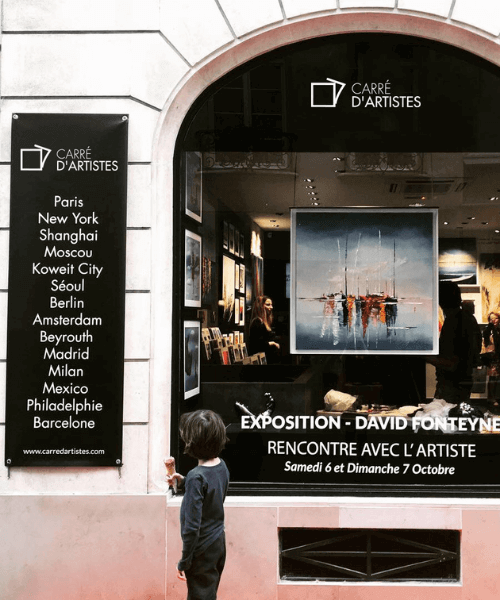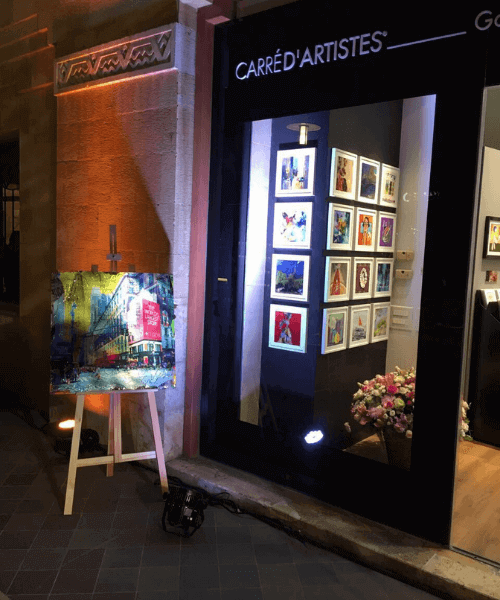Our advice for choosing an artwork
Buying art can seem like a difficult process. Choosing an artwork can be tricky if you are unfamiliar with the arts.
However, there are techniques to refine your gaze and find a work of art to your liking.
Away from trends, choosing a work of art is above all a matter of passion and budget.
What places of art should you visit to inspire you?
How to identify your tastes? What style of work can you buy on the art market?
Follow our tips for choosing a work of art that gives you a lasting aesthetic experience.
Summary
- Visit the art places
- Favor a relationship of trust with the seller
- Identify your aesthetic tastes
- Identify your motivations
- Evaluate the space available in the room
- Choose a contemporary artwork
- Choose works that express your personality
- Choose a modern artwork
- List of artworks
- The signing of an artwork
- The certificate of authenticity of an artwork
Visit the art places
To sharpen your gaze, it is essential to visit museums, galleries, exhibitions or fairs.
Discovering works of art, artistic trends and artists allows you to sharpen your gaze and refine your tastes.
Art is above all a matter of passion and a work must reflect your taste and your personality.
Buying your first work of art can seem like a very delicate task.
To avoid any frustration, take the time to tour the galleries in your area to familiarize yourself with their collections and identify works that you like.
Favor a relationship of trust with the seller
Do not hesitate to seek advice from a gallery owner who will be happy to share his passion and his knowledge of the works.
In principle, a good gallery owner will want to meet your expectations, because their goal is for you to come back and consult them when purchasing an artwork in the future.
If the gallery owner distracts you too much from your tastes and motivations, nothing prevents you from visiting other galleries to compare.
And remember, in most cases, it is possible to negotiate the price of an artwork in a gallery.
Identify your aesthetic tastes
Buying a work of art that appeals to you, speaks to you or moves you is a safe investment, because you will never tire of your purchase.
Don't give in to the trends or recommendations of others.
If you are unable to determine your taste in art, you can refer to your preferences for colors, decor style, musical tastes, etc. This is a starting point for your research.
One trick is to pin the works that speak to you as you search the internet.
This will allow you to gradually refine your artistic tastes. If you can't take the plunge, you have the option of renting a work of art and hanging it in your living room before you buy it.
The National Center for Art Image Edition (CNEAI) offers a rental service for original and unique works by contemporary artists.


Identify your motivations
There are many motivations leading to the purchase of a work of art:
- acquire a work of art to enhance your decoration;
- start a collection that reflects your personality;
- discover and encourage emerging artists;
- create a collection of prestigious works, etc.
The trap to avoid is buying the first piece of art you come across that has the right color palette to coordinate with your living room decor.
Work in the right color doesn't always mean work that matches your personality.
It is important to find a work that harmonizes with your interior and also offers you a lasting aesthetic experience.
Evaluate the space available in the room
Before buying a work of art, it is important to have an idea of where you want to install it: living room, bedroom or any other room in the house. How much space do you have? How will the work be lit?
For large format works, it is necessary to know the height of your ceiling.
Choose a contemporary artwork
To choose a contemporary work of art, the right thing to do is to turn to a recognized source.
Selecting the artwork itself is a step, but you will also need to focus on quality, negotiating the price, and possibly issues relating to delivery of the item.
To do this, the sites dedicated to buying and selling contemporary art will be very useful to you.
Choose an emerging artist
Do you want to acquire a contemporary work of art as an investment, but your budget is limited?
Bet on an emerging artist: painting, sculpture, photo, etc. These creations are an interesting investment and are an opportunity to follow an artist whose price is rising. There are platforms that work with the best European galleries.
They offer a selection of original creations by young artists.
Take an interest in young artists
If you are drawn to contemporary art, you can buy your works directly from a novice artist.
Newly graduated fine arts students regularly organize exhibitions to present their work which they sell at affordable prices: paintings, photographs or drawings.
Choose works that express your personality
Exhibiting works of art in your home is a way to express your personality through an aesthetic and original decorative object.
A sculpture, a colorful canvas or an unusual photo are elements that bring a personal touch to the room.
Choose a modern work of art
Choosing a modern work of art is now accessible to everyone.
Although it will be difficult for you to acquire a Picasso painting, you can opt for drawings by famous modern artists or turn to works of modern art produced by artists of today.
You can be assisted in your research for questions relating to the authenticity of the work.
This gives you the guarantee of acquiring an original part which has been the subject of an expertise and whose traceability is known.
List of works of art
The question of the price of an artwork arises regularly both when buying and selling.
The official quotation is the approval of the selling prices (or prices estimated by experts) of works by the same artist, over time.
The quotation of deceased artists is the official quotation of the artist as it appears in the various online arguments.
For living artists who have already produced a certain number of works, the principle is the same. For other artists, the criteria that determine the price of the works are as follows:
Criteria related to the work itself
The production of the work is a criterion to be taken into account: medium, genre, rarity and uniqueness of the work are elements that influence its price.
The format is a criterion that is also taken into account in determining the price of an artwork.
This is based on the points system (for example 5P at 20 € for a painting which will be sold at 100 €).
Finally, its intrinsic value that an expert can detect at first glance: composition, treatment of the subject and colors, originality, power, etc.
The criteria related to the artist
The artist’s background is important: exhibitions, collections or any other artistic event with selection. Participation in international fairs, actual and institutional sales, the artist's amateur or professional status and the number of galleries following the artist are criteria that influence the rating.
A beginning artist will set his price according to the material cost, time spent and the complexity of the subject.
First and second art markets
Works purchased directly from the artist's studio are said to be from the first market. This is a recent work, the price of which has been determined between the artist and the gallery owner.
A work acquired in the auction room is a work that belongs to the second market (second-hand).
In this case, an artist's rating is an insufficient indicator since it is based on a low number of transactions.
As a result, the rating of an artist today is primarily determined by galleries, art dealers and collectors based on the price at which the work is sold.
The signing of an artwork
The signing of a work of an artwork authenticates and legitimizes the work.
For the buyer, the signature guarantees its authenticity.
Great artists systematically signed their paintings and some signatures became very famous (think of Picasso or Monet). Replacing the hallmark, the signature of works of art spread in parallel with the development of the art market for collectors.
The certificate of authenticity of an artwok
The certificate of authenticity of an artwork is an act drawn up in a single copy which certifies that a work of art is authentic, that is to say that it has been produced by the artist. with which it is associated.
The certificate of authenticity also makes it easier for you to resell the work on the art market.
It can be made tamper-proof by a watermark, a secure code or a seal. The certificate of authenticity is established when the work is sold and follows it throughout its successive sales.
Complementary articles
On the subject:
Buying art : understanding
Find out more :
Other articles:




